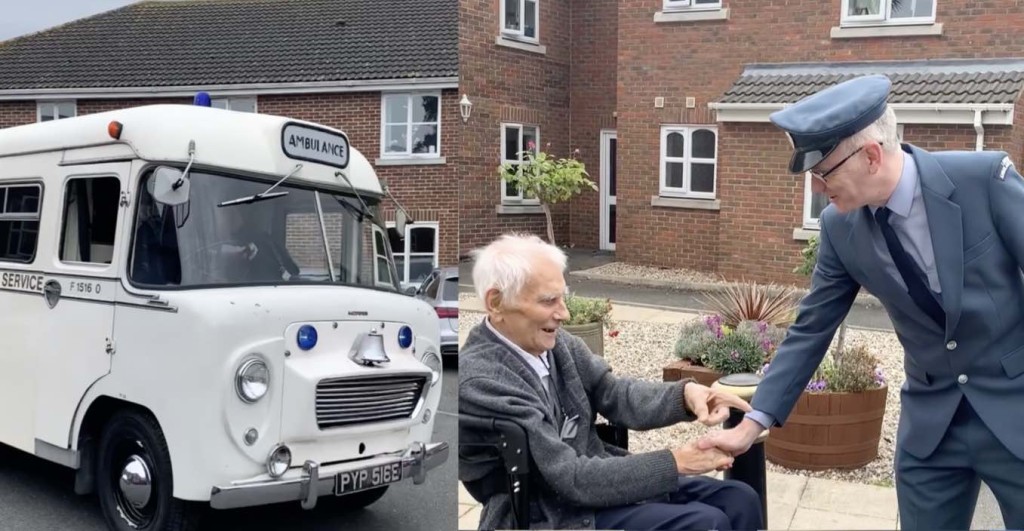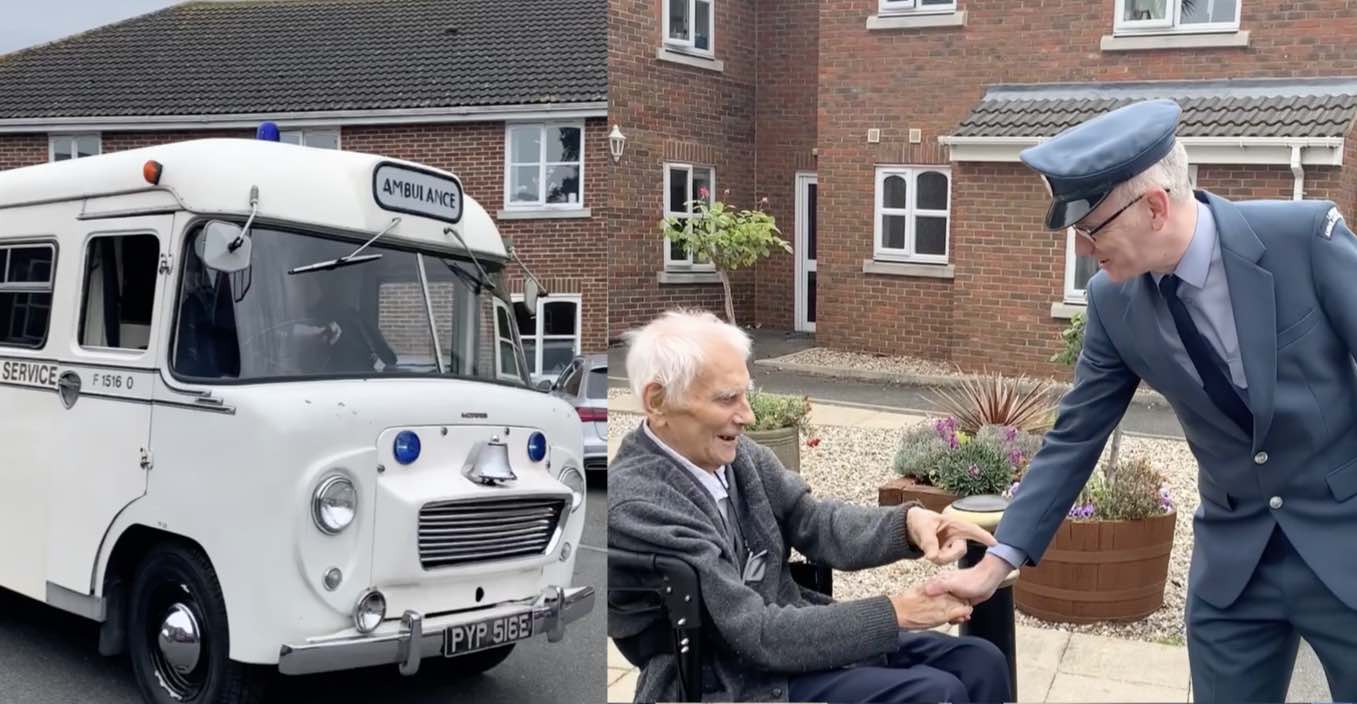
A 98-year-old dementia patient and veteran of World War II got to relive his career by riding in a retro ambulance and donning the old uniform—which opened the floodgates of precious memories.
Albert Gibbs, who worked on ambulances in London for a quarter-century, was visited by two paramedics in a 1960s ambulance, wearing familiar gray uniforms—just like the ones he used.
They were dispatched to a care home in Essex where Gibbs lives, so the great-grandfather could relive his days as a medic.
Paramedics Craig Henty and Terence Thomson drove up in an original 1967 Morris Wadhams ambulance, complete with period uniforms, that instantly took Gibbs right back to the old days when he was based in East London.
“I wore the same uniform and the same hat,” he exclaimed, as his memories sparked details.
“I recognize your badge. It’s from the north-east sector, where I used to work. I was stationed at Ilford, but sometimes also worked in Romford.”
He also recalled some important moments from his 25-year career, saying, “I delivered five babies and saved a person who fell under a train.
Elaine Dettmar, Gibbs’ daughter, said: “That was a huge part of my dad’s life – it was moving to help him relive it.
“As he talked and engaged, more memories were coming out.” (See short video below…)
Before visiting, Craig and Terence researched the archives from Albert’s time at the Service through its Historic Collection and traced thank you letters from patients that Albert had cared for and photos, too.
The head nurse at the Elizabeth House Care Home, Tracy McGuinness, said many dementia sufferers can benefit from visual and sensory cues to stimulate their brain and trigger memories of their lives—which keeps their brain engaged and can reduce cognitive decline.
LOOK: Singapore Uses Bright Colored Signs to Created a Dementia-Friendly Neighborhood
The pictures included images from a work holiday that Albert organized to Spain.
“I had a holiday club that people called ‘Gibbs Tours’, and I once arranged a weekend in Benidorm and got 43 people to go, including ambulance workers, nurses, doctors, and their families,” he said.
Gibbs also had a cheeky, mischievous side.
“I had a good time and a lot of laughs at the service, especially when I rang the ambulance bell on the Woolwich ferry.
“We weren’t allowed to do that, but I did it once and then sped down the ferry. It got me into some trouble.”
POPULAR: Dementia Sufferer Defies Diagnosis to Conduct Symphony Orchestra at Age 81: ‘It was magical’
He became a medic in 1965 and joined a new London-wide service that was formed when nine existing ambulance corps merged, uniting nearly 1,000 vehicles and 2,500 staff. Known today as ‘London Ambulance Service’, it is the busiest emergency ambulance service in the world.
Craig Henty, London Ambulance Service paramedic and head of Historic Collections, said: “I sat with Albert in the back of the ambulance for a chat and it felt as if we had just finished a job together.
“His mannerism and familiarity with the vehicle are classic of someone who works in an ambulance. He even rested his feet on the rail in front of him and that’s exactly what an ambulance crew would do.
RELATED: Dementia Cases Have Declined by 13% in US and Europe Every Decade Since 1988, Researchers Found
“I was amazed to see that the experience brought him right back.”
You can donate to the Historic Collection—which includes horse carriages and blitz ambulances from the Second World War, and is maintained entirely by volunteers—by visiting their website. The uniforms and vehicles are available for hire to film/TV crews, weddings, funerals, and other events.
DON’T FORGET to Share The Sweet Service to Inspire Others on Social Media…




















